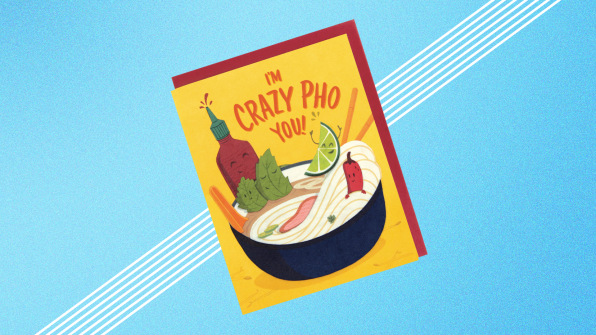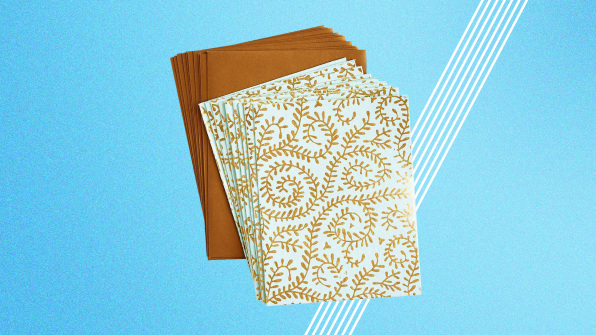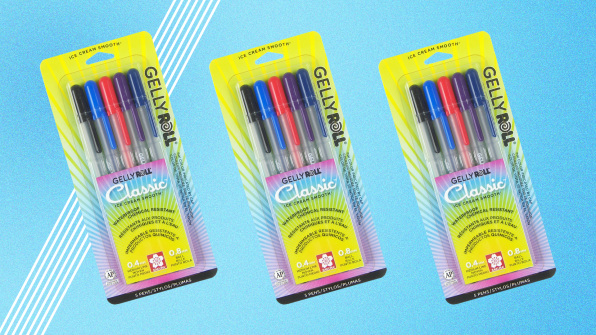How to Write a Thank You Note for Hosting a Baby Shower
"Researchers have been making the case for 15 years that expressing gratitude can improve well-being, but we have yet to understand why in practice people don't walk around in everyday life expressing thanks," says Amit Kumar, a professor of marketing and psychology at the University of Texas at Austin, who has studied everything from consumer behavior to judgment and decision-making. These days, he is primarily focused on how people find joy in their daily lives.
To figure out what is standing in the way of people expressing gratitude, Kumar and his research partners had participants write a "gratitude letter" to someone in their life who had made a positive impact in some way. The writers then were asked to predict how recipients would feel when they received the letter. Researchers followed up with recipients to record their actual reactions.
According to the results, published in the Association for Psychological Science, the thank you-note writers "significantly underestimated" how happy their letters would make recipients feel—and overestimated how awkward the letters would make recipients feel. "People know there will be a good reaction," Kumar says. "But they underestimate just how good of a feeling it can incite to reach out kindly."
That's because in our daily lives, we don't often get feedback on how we've positively impacted the people around us. "One of the barriers that keeps us from expressing gratitude and performing kind gestures," says Kumar, "is that people are inordinately concerned with how they express gratitude." In other words, self-consciousness is standing in our way.
There's an underlying psychology at play. "We call it competence versus warmth," Kumar says. When we evaluate others, we focus more on their warmth—their sincerity and positive intent. When we evaluate ourselves, however, we focus on competence: on whether or not we have crafted the perfect, most articulate words. "We underestimate the power of warmth on recipients because we are so busy evaluating ourselves on an entirely different basis," Kumar explains.
What does that mean for thank-you note writers? Stop second-guessing your words and simply focus on penning something heartfelt. It will make the recipient feel better than you imagine.
Now that you have the courage to put pen to paper, we encourage you to do just that. Emails and texts are fine for some occasions, but sending a card makes a thank-you much more memorable. "It's a big deal to take the time to put thought into saying thanks," says Winnie Park, CEO of Paper Source. "And there's something compelling about paper that represents that. It's not something you delete—you get it and can keep it, and for that reason it sticks in your memory."
She understands the self-consciousness that comes with these things—especially when it comes to professional thank-yous. "It starts with personal vulnerability, and that's what trips people up," she says. "Telling someone else why they're special also says something about you." But Park agrees with Kamut that keeping it short and sweet is just fine. "People don't need a novella. Just being able to commit to paper and write how you've been touched is a powerful statement of your personal brand," she advises. "The most professional notes are handwritten and include the simple things that we learn to communicate when we're young. Start the letter with 'Dear,' include the words 'thank you,' and sign it with a closure that is kind. I sign everything 'warmest.'"
Park recounts an interaction she had recently at her office in Chicago. A coworker wrote her a thank-you note and left it on her desk before their weekly morning meeting. The note, which outlined how Park had helped this colleague, brought tears to Park's eyes. "This is the thing that creates the gratitude circle," Park says. "It's what makes work, relationships, and the world better."
Here are a few of Park's favorite thank-you-letter writing supplies that she always keeps in her desk.

Good Paper Stationery(starting at $6)
This paper, which is handmade by women who have escaped the sex trade, does good in more ways than one. "The owner of this company not only does good for the world but makes great paper," Park says. "They put a lot of time into the product—the color, the weight, how it feels. I love it."

Gold Vines on Mint Stationery Set ($16)
These sheets of paper are more than what meets the eye. "Our Indian note sets, sourced from India, are made out of old silk saris that have been pressed into paper," Park says. "Tactilely, it's something really different, and the storytelling means something so much more."

Sakura Gelly Roll Pens ($7)
"Sakura is one of my favorite brands—and that's saying something because we test our writing instruments religiously," Park says. Gel ink is highly recommended because of its permanence and zero-resistance roll against paper.
Stabilo Point 88, Set of 12 Pens ($9)
"This pen packs a very fine point, and the colors are incredible," Park says. "You don't just get emerald; you get clover green as well. And using colored ink is underrated. Your handwriting and the ink you use is like your fingerprint."
Fast Company may receive revenue for some links to products on our site.
How to Write a Thank You Note for Hosting a Baby Shower
Source: https://www.fastcompany.com/90404107/how-to-write-the-perfect-professional-thank-you-note
0 Response to "How to Write a Thank You Note for Hosting a Baby Shower"
Post a Comment